The protected areas of the Cape Floral Region are one of those outstandingly beautiful locations, that some of its scenery seems out of this world. This gem of a location is one of only 6 floral kingdoms found around the globe.
I know numbers can be boring, but they simply showcase the richness and diversity of this small area in the Cape Region.
Here are just a few statistics that will hopefully wow you; the area is home to nearly 20% of all of the continent’s plant species yet it only covers about 0.5% of the continent’s total area.
It has more than 9000 known species of plants, with 69% of them endemic to the Cape floral region. Hopefully, those numbers piqued your interest, well let’s get deeper into why the Cape Floral Protected areas are one of South Africa’s gems.
The Cape Floral Region Is A World Heritage Site With Protected Areas.
The Cape Floral region was added to the World Heritage Sites list in 2004. The region has an outstanding number of plant species that are both endemic and densely populated in a relatively small area.
To understand just how important the Cape floristic area is, we have to look at the 6 different floral regions across the world.

Plant distribution is affected by different factors such as human interference, fire, tectonic, physical, biotic ( these are living organisms that shape the environment around them), soil, and climate.
These factors have led to certain plant families being found in different regions around the world, which are classified into floral kingdoms.
Botanist Ronald Good ( 1896-1992) grouped these floral kingdoms into 6.
These are;
- the Holarctic floral kingdom which is the largest floral kingdom encompassing all non-tropical areas of Africa, Europe, Northern America, and Asia.
- the Neotropical floral kingdom ( Mexico, Central and South America),
- the Australian floral kingdom,
- the pleiotropic floral kingdom ( greater parts of South East Asia, west Asia, South Asia, and Africa),
- the Antarctic floral kingdom,
- and finally the Capensic floral kingdom.
- The Cape floral kingdom unlike the other areas only covers the Cape region of South Africa making it the smallest of these floral regions and one of the most biodiverse.
This region is one of the most diverse regions in terms of plant life compared to any other comparatively sized region in the world. The flora found in the Cape Floral Region protected area is so unique and diverse that it deserves protection and recognition.
Size and Location of the Cape Region and a Cape Floristic Region map
This world heritage site consists of an archipelago of 8 sites that encompass as much of the floral bounty as possible.
These protected sites form the Cape Floristic region map and are:
- Table Mountain National Park,
- Cederberg Wilderness Area,
- Groot Winterhork Wilderness Area,
- Boland Mountain Complex,
- De Hoop Nature Reserve,
- Boosmansbos Wilderness Area,
- Swartberg Complex and
- Baviaanskloof Mega Reserve.
The heritage site thus covers an area of 90,000 km² ( 34,749 mi²). It is found in the Western Cape Province, from Clanwilliam and extends Eastwards into the Eastern Cape Province to Port Elizabeth.
The floral region is spread over a large area and is best accessed from the City of Cape Town in the Western Cape and the town of East London in the Eastern Cape.
To find a map of this region, I would advise you to check out this website, as I am not sure about the copyrights of this map.
The Flora of Cape Floral Region Protected Areas
Most of the plants in the floral area belong to a family of plants known as fynbos. The word fynbos can mean ‘fine bush’ in the Afrikaans language.
This word is associated with all the plants of the rich and mountainous Cape region of South Africa.
There are about 9000 different species of fynbos plants within the Cape Floral protected area. Also, a lot of the plants can be found nowhere else other than the Cape floral region.
Fynbos are plants that are hardy and create shrub-like structures, and also bear vibrantly colored flowers. There are four main types of plants you’ll find here, which are:
- shrubs and large woody trees,
- plants that grow from bulbs,
- plants that look like reeds,
- and heath.
The fynbos vegetation also has another factor that is vital for their life cycle: fire.
The fynbos vegetation over a very long period of time has adapted to the cape region’s harshness with a cycle of fire, wind, sunshine, water, and little nutrients.

The fire burns excess accumulated plant materials, recycling them while enriching the soil. The intense heat of the fire also forces open tightly closed seed cones and triggers bulbs that are underground to start growing.
Immediately after a fire, you’ll be surprised to find green buds and shoots emerging, covering the charred land in a carpet of green a few months later.
The fire needs to burn in cycles of about 10-25 years to be helpful to the plants instead of damaging.
The Fauna of Cape Floral Region Protected Areas
Birds
The Cape region is more synonymous with botanism due to the great bio-diversity of plants in the region. But it is also one of the greatest spots in South Africa for some exotic bird watching.
The diversity and richness of the flora in the Cape Region give rise to some spectacular and endemic bird species.
Birding here will give one the chance to spot some of South Africa’s endemic species such as;
- Cape Bulbul,
- Cape Spurfowl,
- Cape Sugarbird,
- Orange Breasted Sugarbird,
- Cape Siskin,
- Cape Batis,
- Cape White Eye,
- Swee Waxbill,
- Forest Canary,
- Hottentot buttonquail, (see video below)
- and Forest Buzzard.
The coast of the Cape region has particularly rich waters that provide and support a thriving community of pelagic birds.
Want to find the best binoculars for a safari? Check out my blog post here!
Some of the aquatic bird species that can be spotted in the region include;
- shy albatross,
- black-browed albatross,
- Atlantic yellow-nosed albatross,
- Indian Yellow-nosed albatross,
- Northern Giant Petrel,
- white-chinned petrel,
- spectacled petrel,
- sooty shearwater,
- bank Cormorant (endemic),
- crowned cormorant,
- cape cormorant
- and the African penguin.
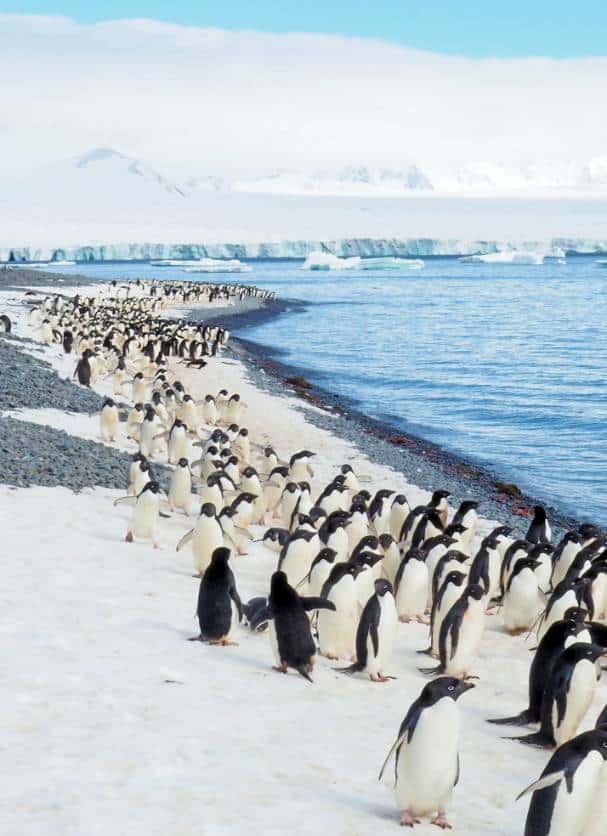
Other Wildlife in the Cape Floral Region Protected Areas
The area does not support a large number of animals when compared to other locations in true savannah conditions. Once upon a time, the area did support many known large mammals, but today these populations have disappeared.
The only big mammals that can be found in the region include several species of antelope such as the Bontebok and cape Grysbok.
The region has a relatively high number of endemic reptile species, including five tortoise species found exclusively in the Cape floral region. There are also more than 40 different species of amphibians, with 16 of them being endemic to the region.
Weather and Best Time To Visit the Cape Floral Region.
The Cape Floral region enjoys a Mediterranean type of climate, with the summers being long, warm, and dry, while the winters are wet and relatively short.
Most of the rains fall during the months of June to September during winter. During the summer months, from December to March, the region is quite dry.
But the rain is dictated by the location on the mountain slopes. Being close to the sea means the temperatures are influenced by the ocean making the summers cooler and the winter warmer. But the temperatures in summer can creep up to about 40⁰C (108⁰F), but in short spells.
Early spring from August to September is the best time to visit the Cape Floral region since this is when the flowers start to bloom. These flowers keep on changing colors early on into the summer months.
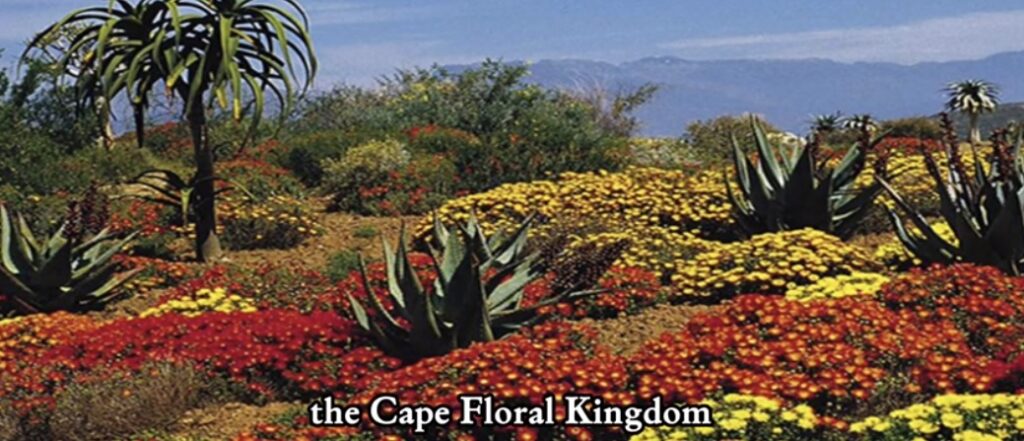
Things To Note on the Cape Floral Region Protected Areas
- The best way of exploring the floral kingdom is through a self-drive.
- A guided tour from a local guide is also a good option as they have insider knowledge of the region and the hidden gems that are not known to everyone.
- When planning a visit to the Floral Kingdom, good walking shoes, hats, and sunblock are a necessity.
Threats and Conservation.
The fynbos vegetation is extremely resilient and although human encroachment is a recurring issue, they usually colonize steep mountainous slopes that are not fit for human activities.
One of the major issues that fynbos are facing is from invasive species that are adapted to the same environment such as Australian Acacia and eucalyptus trees. These species can be quite aggressive often choking out the fynbos and replacing them with dark, silent forests.
The other issue that the fynbos vegetation in the Cape floral region is facing is erratic and frequent wildfires. The vegetation is built with the ability to survive and thrive in fire-prone areas, but when the rate of wildfires is higher than the vegetation can regenerate then it dies out.
The other issue of alien tree species also adds to the issue, since these trees make the wildfires burn hotter. Thus the fire incinerates instead of stimulating the vegetation.
FAQS on the Cape Floral Region
- Why is the cape known as the smallest floral region?
The Cape Floral region only covers an area of about 90,000 km² (34,749 mi²) which is about 0.5% of the total land in Africa. The other floral regions occupy large swathes of lands encompassing different continents or a single continent in the case of the Australian floral kingdom.
The whole of Africa belongs to two floral kingdoms, but the Cape region is dynamic and quite specialized so much so that the plants here are their own small floral kingdom.
- What is meant by Floristic region?
A floristic region refers to an area with a uniform composition of plant species.
- What type of ecosystem is the Cape Floristic region?
The Cape floral region can be considered as a Mediterranean-type ecosystem where fire is important for the life cycle of the plants.
My Final Conclusion.
I hope that you found this article on the Cape Floral Region Protected Areas interesting and informative enough, but if you have any more questions, please feel free to leave a comment down below in the comment section.
You can also find me on my social media channels below for more stories and pictures of my travels, feel free to join me!
I wish you happy travels!
Kind regards,
Lizzy
I now have a YouTube channel as well!
YouTube
Hello Africa travellers!
Who am I? Well, the least you can say is that I am quite crazy about Africa, its nature, its climate, its culture, and more.
As a young woman in my twenties, I had already traveled to several African countries by traveling along in an overlander on my own and mostly camping ( or glamping ) and just fell in love with the diversity of it all.
So much, so that at the age of 26, I went back to university to study biology, which, unfortunately, I couldn’t finish because of health reasons (yes, I got sick from a tropical disease, oh cynicism). But this did not stop my dream of traveling back to Africa several times, and I still do.
My dream was back then to leave Europe and go study animal behavior, especially the elephants (sure, that’s every girl’s dream haha), but I am also very much intrigued by hyenas and other “ugly African animals“.
So, I “kind of” have a little bit of a scientific approach to my articles, when I write about African birds, for example. And most of all: the passion.
But life goes on, you move from one side of the country to the other, you get sick again and top it off with lower back problems, and before you know it, you are over 50 hahaha!
Now, I still travel to Africa, but take it a bit “easier” than the good old camping days, and stay in comfortable, yet affordable accommodations, together with my husband Wouter.
These are some of the countries I have traveled to: Kenya, Tanzania, Zanzibar, Malawi, Zambia, Zimbabwe, South Africa, Namibia, Botswana, Tunisia, and a little bit of Lesotho LOL .
While clearly not being African territory, but Spanish, I also visited Gran Canaria and Tenerife, and location-wise, I consider them “African”, because of their climate and nature, sue me :-p
The last trip I took was to South Africa in the year 2023, and it sure got the fevers for Africa back! From the Barberton mountains to the Drakensberg and the Southcoast, one month wasn’t enough at all to see the whole country, so we’ll be back! At ease and with a little bit more luxury than in my younger days haha!
I wish you happy travels!
Kind regards
Lizzy

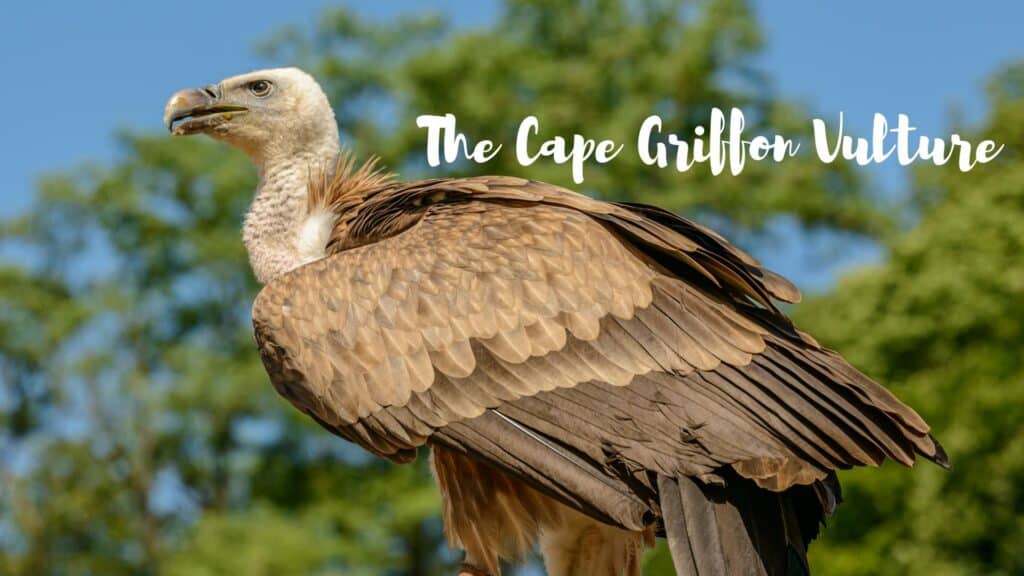


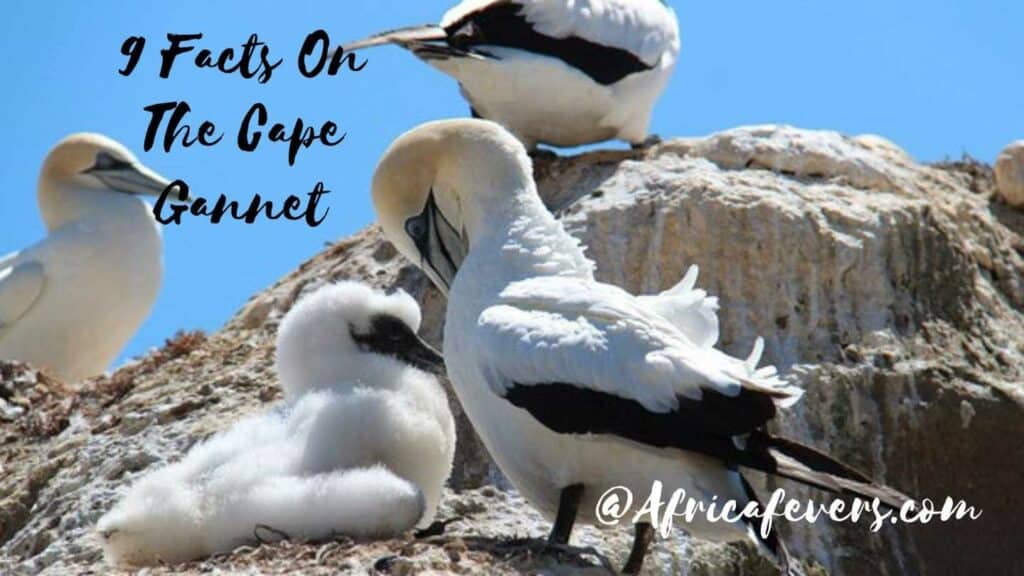

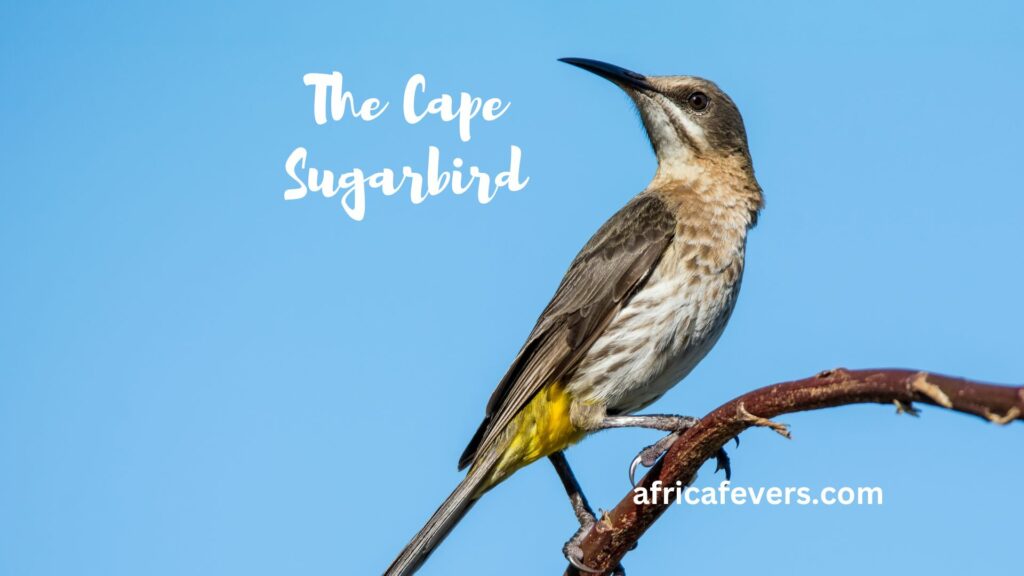
Thank you for such a comprehensive and informative article about the Cape Floral Region. The extensive details, backed by rich imagery, bring out the importance and beauty of this unique biome. I have a question regarding the invasive species: How are conservationists and local authorities addressing the challenge of invasive species like the Australian Acacia and eucalyptus trees? Are there any ongoing projects or initiatives to control or eradicate them from the Cape Floral Region?
Lou.
Hi Lou!
Thank you for your wonderful comment and to answer your question, I would like to refer you further to this article from Science Direct, and I hope you will enjoy the expanded read on this topic 🙂
I wish you happy travels!
Kind regards,
Lizzy
Exploring the Cape Floral Region Protected Areas through your article has been nothing short of a fascinating journey. It’s astonishing to learn about the rich biodiversity and unique flora and fauna that thrive in this relatively small but incredibly diverse region.
It’s heartening to know that the Cape Floral Region has been recognized as a World Heritage Site, emphasizing the importance of preserving this natural treasure. However, the challenges it faces from invasive species and wildfires remind us of the ongoing need for conservation efforts.
Thank you for sharing this captivating journey through the Cape Floral Region Protected Areas! 🌿🐦🌍
Hi Stratos!
Thank you for your comment and I hope you get to visit the Cape Floral region soon!
Kind regards,
Lizzy
Wow I’m in love with Africa! So when you talk about Cape Floral Region, I’m amazed at the beauty of this site! Indeed, when you 6 floral kingdoms located in just one place, you know you’re going to live something exceptional on that place. And I love the wildlife and the animals as well: the penguins, the birds…This area must be protected at all costs!
Hey Angel!
You are totally right indeed, I hope it will stay protected! Look out for the next blog posts where I will go into detail on all of the protected areas and 6 kingdoms!
Kind regards,
Lizzy